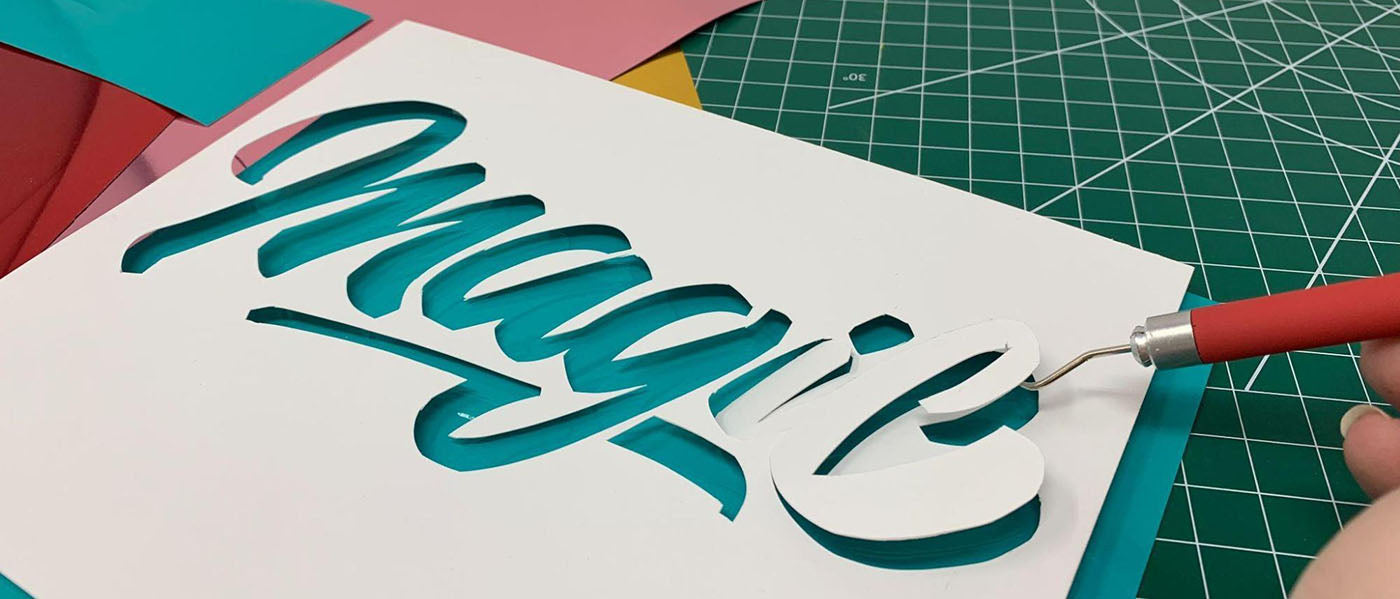
Vinyl Crafting Tools Guide
Creating with vinyl takes precision tools, even if you own the best machine available on the market. A vinyl cutter does all the vinyl cutting, sometimes very quickly, but you’ll need to put in some time and manual labor to complete each project. There are pieces that need removing, transferring and so on…
In this blog post, we’ll talk about the essential precision tools you’ll need alongside your vinyl cutter to complete your project and how to use them.

Weeding Tool
Also known as a weeder hook, this is a small metal tool with a hook that features a fine tapered pointy tip. Its shape allows for better control and removal of even very small pieces, like the center of the letter O or A.
How it works: One way to weed out parts away from your vinyl design is to gently slide the pointy end of the hook under the piece you want removed and pull up and away. It’s important to remember to not scuff or pierce the parts of the final design. Invest in a tool that has a sharp tip that will not stuff or tear the vinyl.

Awls
Awls are sometimes referred to as scribe tools or air release tools; but this is all dependent on who is using the tool and in what industry or art form.
These vinyl cutting tools have a straight point and come in various sizes, like .030”, .060” or .090”. Some awls are retractable. This feature protects you from accidentally poking yourself and the tip of the awl from becoming dull.
These tools are used for releasing air pockets from under vinyl, including craft vinyl, as well as car wrapping vinyl, which is a durable and more pliable film. When covering large areas, small air pockets are almost inevitable. Awls provide a solution by creating a tiny puncture in the air bubble to release the air. Then, once smoothed down with a squeegee, the hole is not noticeable. This, of course, takes practice so test on scraps before attempting on your final project.
Other uses for awls include etching, marking materials, scoring paper, plastic or leather, clay modeling and other modeling, piercing jewelry components made from metal or clay and, of course, weeding vinyl.
See Our Full Assortment of Awls and Weeding Tools
Tweezers
Often used to pick up and pick out what was left behind, including tiny bits of paper, vinyl or foreign objects that somehow found themselves stuck to your project. A fine and curved point of a slant point tweezer works very well in removing tiny pieces, similar to the weeding hook. These two tools can sometimes be interchangeable.
Other tweezers to consider when crafting with vinyl or paper cutting machines are the straight point tweezer and self closing tweezer. These are great when you need to pick something up and hold it in place for a moment.

Craft Knife
If you’re reading our blog, this tool needs no introduction. A good hobby knife with a sharp blade is a must when vinyl crafting. Use it to cut sheets of vinyl when prepping for a project. Or cut designs out of vinyl freehand and even trace over that line that the machine didn’t quite get all the way through.
Tool Tip: When working with vinyl, always use a sharp blade to prevent snagging, warping or tearing the medium while working.

Swivel Knife
This tool has a very small blade that rotates 360 degrees. Cut curved lines easily in vinyl or paper. Watch our video about this great little tool to learn more about it and how to use it.

Snap Blade Knife
If you're working with large sheets of car wrapping vinyl or similar, use a snap blade knife to cut your sheets down to size. There are a few benefits to using this type of knife — one being that the blade is retractable so therefore protected from dulling and keeping it sharp longer.
By design, the dullest tip is meant to be broken away to reveal the next sharp edge. Many of these snap blade knives feature a cap that can be used to cleanly break off the dull section.
Check Out Our Entire Vinyl Cutting Tools CollectionCutting Mat
For your machines, use the manufacturer recommended cutting mat, as these are sometimes thinner and more pliable. For your workspace, use a large, durable self healing mat to protect the tabletop and keep your tools sharp longer. Read more about how cutting mats work in our earlier blog — How Do Self-Healing Cutting Mats Work?